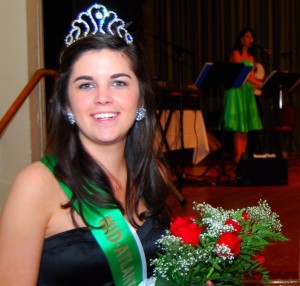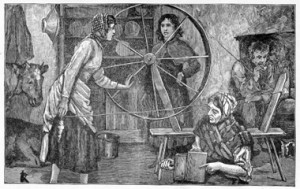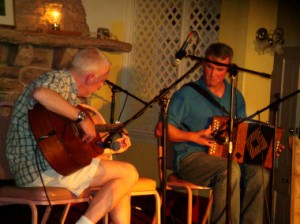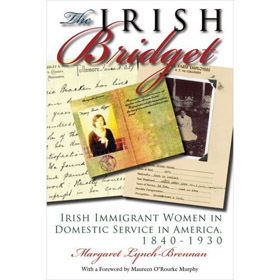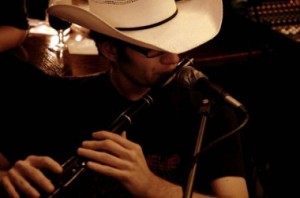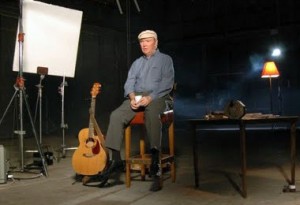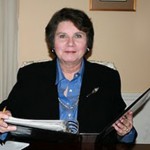This August, when women from all over Ireland and the world gather in Tralee for The Rose of Tralee International Festival, Mairead Conley will be there to represent not only Philadelphia, but the Mid-Atlantic region of the United States.
A celebration of “modern young women in terms of their aspirations, ambitions, intellect, social responsibility and Irish heritage,” the festival could have crafted their definition of a Rose around Conley.
Aspirations: “I think it’s great how unexpected life can be. A year ago I never could have pictured myself here. I’m so excited for Ireland and the festival, but I’m even more ecstatic for the upcoming year—to take on such an active role in the Irish community in Philadelphia.”
Ambitions: “I’d always been interested in pursuing a career in non-profit management. Last year, my mom saw the interview that Denise Foley did with Siobhan Lyons [head of the Irish Immigration Center here in Philadelphia] on irishphiladelphia.com and sent it to me. I contacted Siobhan, and we talked about what I was interested in, and what the goals of the center were. I began interning there last August. I never even realized how ignorant I was about the immigration process in this country. So many positive things have come out of working there, including being on the IN-Philly Board.”
Intellect: “In 2007, I graduated from Temple University with a degree in sociology. If I could have, I would have majored in anthropology and African-American studies as well. I’ve always planned to go on for a master’s degree in social work.”
Social responsibility: “Growing up, service was always a part of my life. It was just another activity, like ballet or chorus. We volunteered at St. Vincent’s Soup Kitchen in Germantown, and every Saturday I’d go with my aunt, who was a nun, to collect food from restaurants and farmers markets and deliver it to the St. Francis Inn in Kensington. In the summers, we’d go and stay with another aunt in Ohio (my mom is one of 10 kids) and teach vacation Bible School in Appalachia. The year after I graduated from Temple, I spent a year with the Mercy Volunteer Corps volunteering at a Catholic grade school in Cincinnati. There are so many kids living in poverty, and I think it’s so important to give them outlets and hope. I really believe it’s an important part of my spiritual development and growth.”
Irish heritage: “The Conleys are from Ballina in County Mayo. They emigrated to Canada, and were in Newfoundland before coming down into the U.S., into Indiana and Chicago. My mom’s family is from Strabane, County Tyrone, and from Abbeyfeale, County Limerick. We just visited some family there last summer. And it’s really funny because I was actually in Tralee last year, too. I saw the rose gardens and we saw a show at the National Folk Theatre. It never entered my mind that I’d be going back, let alone as a Rose.”
But when deciding on the Rose, judges look beyond even those characteristics to discern “the truth in her eyes” as William Mulchinock’s song “The Rose of Tralee” characterizes it.
And just so, there is more yet to Conley:“I find it all so overwhelmingly exciting that it’s taking me a while to soak it all in. I really wasn’t going to do it, enter the Rose Festival—I’m someone who’s an observer of people and I generally don’t like the limelight—it’s so strange that the tables have turned,” Conley explained.
“Kathleen Murtagh encouraged me to enter the Miss Mayo Pageant last November, and Sarah [Conaghan, managing director of the Mid-Atlantic Rose of Tralee Center] was a judge there.
After Miss Mayo, Sarah encouraged me to go out for the Rose. I said I would think about it, but it seemed so out of my realm that I put it to the side,” Conley laughed.It wasn’t until more encouragement from City Councilman Bill Green, and the ladies at the Immigration Center’s Senior Lunch, that Conley threw her tiara into the ring.
“In March, at the Philadelphia Rose Selection, I got myself worked up and stressed out over it… so by the end of the night, I was shocked that I was a finalist. I find it difficult still. All of these women are so intelligent, savvy and dynamic. But camaraderie is really emphasized; there truly is a lack of competition.
“And so much is based on service. That’s an area I’m comfortable talking about. I still have a strong desire to do a service year abroad; I’d even started the application process for the upcoming year—I really didn’t think I’d win. I believe in thinking globally and acting locally, in doing something that will make a big difference in a small area.”
In fact, Conley chose two charities to sponsor as the Mid-Atlantic Rose: Holy Family Home and The Little Sisters of the Poor in Southwest Philly, where her grandmother lives, and the Southwest Community Arts Center where she did service work growing up.
“I feel like I’ve been blessed that I’ve had a lot of freedom to be able to choose what I want to do in life, and then do it. This past year has shown me that life is full of surprises and unexpected opportunities.
“Jocelyn McGillian did such an awesome job as Philadelphia’s Rose last year. I have some big shoes to fill. I’m really looking forward to working with Sarah, and the whole Conaghan family. I just have to say how genuinely kind everyone has been, even before the Rose. The Philadelphia Irish community is closeknit but so welcoming… I really think it’s going to be a great year.”
And on August 24, all Irish eyes in Philadelphia will be looking toward Tralee, and rooting for the home town favorite.

